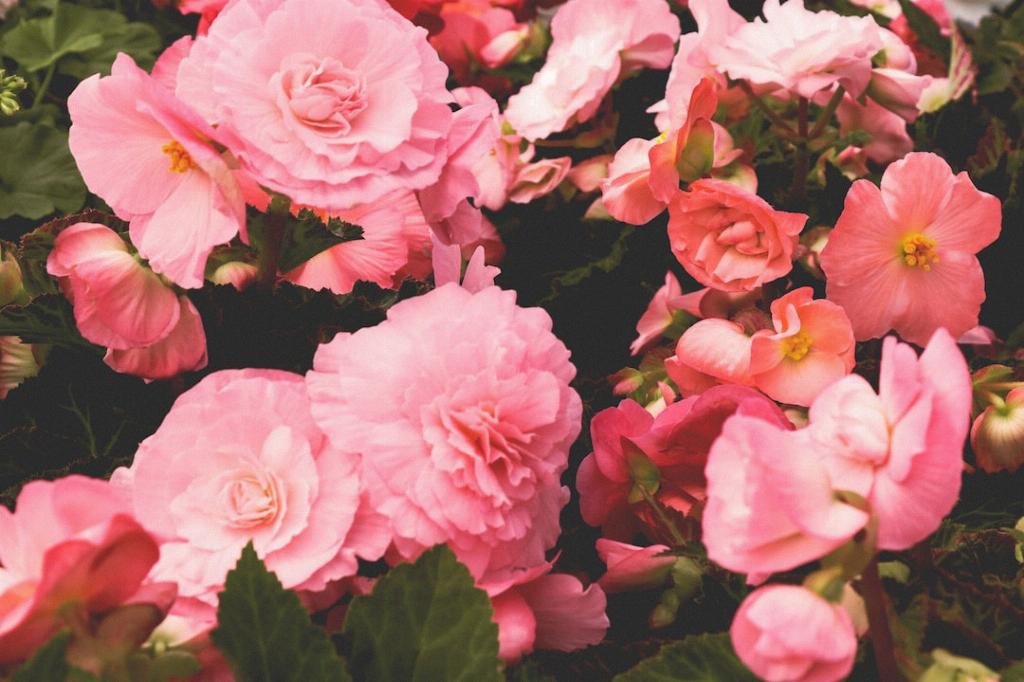When it comes to taking care of begonias, it’s essential to provide them with the right growing conditions to thrive. Begonias can be both annual and perennial plants, requiring partial shade and moist, well-drained soil that is rich in organic content. Ensuring proper soil drainage prevents waterlogged roots, which can lead to root rot and other issues.
Begonias thrive in bright light conditions, but it’s important to strike a balance, as too much direct sunlight can scorch the leaves. Opt for a location that receives morning sun and afternoon shade, or plant them in an area with dappled sunlight beneath the canopy of a tree. This setting provides the ideal mix of light exposure for your begonias.
Watering is a crucial aspect of begonia care. These plants prefer consistently moist soil, but they don’t tolerate standing water. Water your begonias when the top inch of soil feels dry to the touch. It’s best to water them at the base to keep the foliage dry, as wet leaves can make the plant more susceptible to diseases.
Fertilizing begonias promotes healthy growth and blooming. Use a balanced, water-soluble fertilizer every 2-4 weeks during the growing season. Avoid over-fertilizing, as this can lead to salt buildup in the soil, causing damage to the plant. Dilute the fertilizer to half the recommended strength to prevent nutrient burn.
Pruning and deadheading spent blooms are vital tasks in begonia care. Regularly remove faded flowers to encourage continuous blooming and maintain the plant’s appearance. Pruning leggy or overcrowded growth helps improve air circulation and light penetration, reducing the risk of disease.
Temperature and humidity play a significant role in the health of begonias. These plants prefer moderate temperatures between 60-85°F (15-29°C). Protect them from extreme heat or cold, as temperatures outside this range can stress the plant. Providing adequate humidity levels, especially in dry indoor environments, can keep your begonias thriving.
Pest and disease management is essential for maintaining healthy begonias. Keep an eye out for common pests like aphids, mealybugs, and spider mites, which can damage the plant. Treat infestations promptly with insecticidal soap or neem oil. Proper air circulation and spacing between plants can help prevent pest issues.
Begonias may also be susceptible to diseases like powdery mildew and botrytis blight, especially in humid conditions. To prevent fungal infections, avoid overhead watering and promote good air circulation around the plant. Remove any infected leaves or flowers promptly to prevent the spread of disease.
Propagating begonias allows you to grow new plants from your existing ones. Common methods include stem cuttings, leaf cuttings, or division. Choose healthy, disease-free plant parts for propagation, and provide the right conditions, such as warmth and humidity, to encourage successful rooting and growth.
For outdoor begonias, protect them from harsh weather conditions like strong winds, heavy rain, or extreme temperatures. Consider moving potted begonias indoors during inclement weather to shield them from adverse conditions that may damage the plant. Mulching around outdoor plants can help regulate soil moisture and temperature.
Regularly monitor the health and appearance of your begonias to catch any issues early on. Yellowing leaves, stunted growth, or abnormal spots on leaves can signal a problem that needs attention. By addressing issues promptly and providing consistent care, you can help your begonias thrive and reward you with beautiful blooms.
In conclusion, taking care of begonias involves providing the right growing conditions, such as partial shade, well-drained soil, proper watering, and light exposure. Fertilize, prune, and monitor for pests and diseases to ensure the health of your plants. With attention to detail and regular maintenance, you can enjoy the beauty of begonias in your indoor or outdoor garden.

